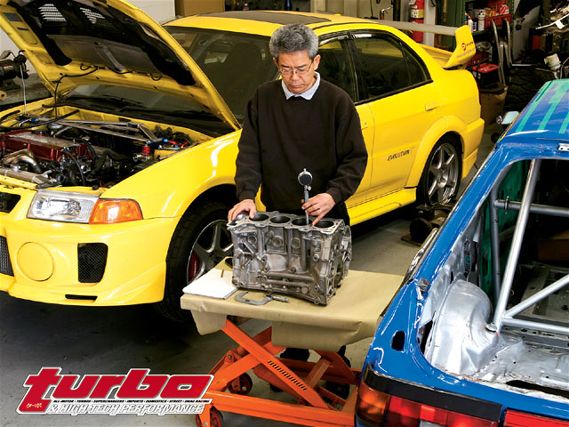 | Project Low-Buck SR20DE - Garage Tech
| Project Low-Buck SR20DE - Garage Tech
When it comes to N/A performance, most people immediately think Honda. While Honda motors are coveted for their all-motor revving ability, other motors also do well in tuned N/A trim, especially for street California pump gas applications. Once such motor is the Nissan SR20DE. Its big 2,000cc displacement is an excellent choice for building a low-buck highly streetable motor that can mimic like a B-series Honda engine for a much lower price. Our low-buck power goal will be at least 180 whp and 150 lb-ft of torque on 91-octane Cali pee water. Unlike many uber builds that end up as tech articles, we'll be looking at cost containment and total streetabilty as our end goals, keeping exotic parts to a minimum. Our engine will also be built with durability in mind. Now that track days are becoming so popular, it's not uncommon for built motors to be pounded around road courses all day. This is far more rigorous and hard on the motor, where drag racers or street racers pull through the gears.
The SR20DE engine has been Nissan's workhorse performance four-cylinder for more than a decade. Originally introduced in North America in the Infiniti P10 G20 and in Japan in the PS13 in 1990, the SR20 was designed as a performance motor from the beginning. Later, in 1991 the SR was dropped into the venerable B13 Sentra SE-R and NX2000. The SR20 was carried over to the B14 200SX SE-R in 1995 and the B14 Sentra SE in 1998 as well as the P11 '98-'01 Infiniti G20. The '00-'02 B15 Sentra SE was the last application of the SR20DE in North America.
The SR was built tough to take lots of punishment. With an 86mm bore and stroke with a rod length of 136.25mm, the SR liked to rev more than its more pedestrian longer stroke siblings. Its lightweight but tough closed-deck aluminum block was designed from the get-go to withstand the rigors of turbocharging in the PS13 Silvia-the much better JDM version of our 240SX. The crank is a beefy fully counterweighted forged and shot-peened steel unit with plenty of journal overlap. The blocks main caps are tied rigidly together with a stout girdle. The rods are forged and shot-peened with generous proportions around the big bolts and bushed floating pins. The cylinder head had finger follower valve actuation for aggressive valve movement control and to make room for high, generous flowing for the time split intake ports. Hydraulic lash adjustment at the pivot fulcrums kept maintenance low. Although the pistons are cast, they're a tough hypereutectic material and have strong detonation-resistant ring lands. It isn't unheard of for a totally stock bottom end SR20DE to produce over 400-turbocharged whp reliably. All North American versions of the SR20DE have a 9.5:1 compression ratio and a 46.1cc combustion chamber volume. The SR20DE also has quite a bit of aftermarket support, as it was a very popular engine for racing and street modification in Japan.
During its production run, the North American SR20DE underwent three different major changes.
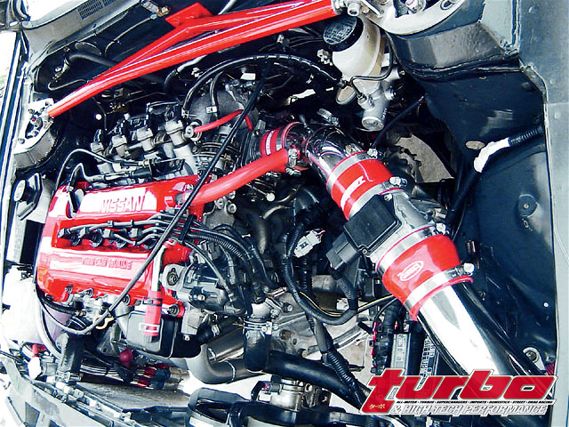 | '90-'93 The High Port
| '90-'93 The High Port
'90-'93 The High Port
SR20DE's made during this period have a racing-type downdraft and straight-shot split-intake port, which is desired for all-out performance in a highly modified engine. The high port was rated at 140 hp. The curving under the intake manifold with the plenum and throttle bodies under the runner most readily identifies the engine. If you're building an all-out turbo or N/A engine, this variant is the most desired. Fortunately, this is also the most common SR20 out there. This engine is also plentiful and cheap from JDM used engine importers. This engine was redlined at 7,700 rpm from the factory.
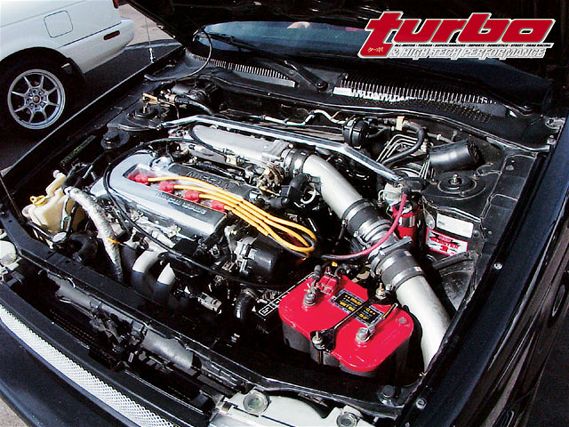 | '94-'99 The Low Port
| '94-'99 The Low Port
'94-'99 The Low Port
In an effort to reduce emissions, Nissan shortened the SR20DE's intake port and placed the injectors closer to the intake valves by using a more conventional intake port design. This intake port makes a sharp turn inside the head and doesn't flow quite as well when ported. Although, it flows nearly as well as the high port when stock. Due to the lower un-split port configuration, the hydraulic lash adjuster also intrudes on the roof of the port. The low-port engine has milder camshafts especially on the intake cam, which is about 10 degrees less duration than the high port. The intake manifold most easily identifies the low-port motor with the plenum on top of the runners. In stock and modified form, once the cams are changed, the low port more than equals the power of the high port, usually producing more bottom end torque and the same amount of horsepower.
'00-'01 The Roller Motor
The '00 SR20DE had significant changes to improve emissions and help power and response. The main cap girdle was deleted to reduce windage losses sacrificed by having the girdle so close to the rotating crank assembly. The pistons were lightened with a slipper skirt racing-inspired design and are coated with black Teflon-looking coating to reduce friction. The pistons have thinner, lower tension for less friction rings. The top ring is moved higher on the piston to improve emissions.
Although the connecting rods are unchanged, the crank is considerably lightened. Since the pistons are much lighter, Nissan was able to remove one counterweight from the crank. The bearing journals are micro-polished. The most noticeable external feature of the motor is the new, taller valve cover to clear new friction-reducing roller rockers. The head has valves with a 3mm shorter stem with springs and retainers to accommodate this shorter height. The roller SR has a revised intake manifold with shorter runners. The intake has a larger diameter, smoother pipe between the throttle body and a new larger airflow meter. The exhaust manifold has a close-coupled catalytic converter. The roller SR has 145 hp.
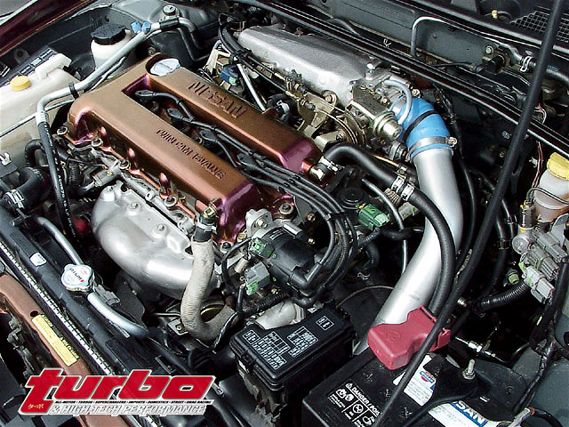 | '00-'01 The Roller Motor
| '00-'01 The Roller Motor
For our buildup we're starting with a JDM Bluebird (the JDM version of our U13 Altima) high-port SR20DE. This engine is very common in JDM engine salvage yards and can be found for as little as $275 for a clean unit. We plan on installing this motor when it's done in our daily driver 200SX SE-R. The engines are so cheap that we decided to do our build leisurely on this spare motor while we continued to drive our 200 on the stock low-port motor. The tricks that we apply to our built motor will also apply to all versions of the SR-so no matter what year you have, you'll get similar results.
Machining and headwork are two of the most expensive parts of a new motor build and we'll save a lot of money here. Since our car sees plenty of track days we'll work to address the SR's weaknesses. Not all of these have to be done on a street car and we'll tell you where you can skip a step to save some money.
To get a good gain of power across the board, we decided to up the compression ratio of our motor to 11.5:1. To do this we obtained a set of SR16VE pistons from GSpec. The SR16 VE pistons are used in a 1,600cc JDM variant of the SR20. These pistons are a high-quality cast OEM piston. It features hard anodizing in the ring grooves for better ring seal over a long period of time and anti-friction coating on the skirts. The pistons use the thinner low-tension rings from the '00-'02 SR. This reduces friction and improves ring seal at high rpm. The pistons are also about 40 grams lighter than the stock pistons. At about $160 a set, they cost less than half of what a set of forged aftermarket pistons go for. While not as tough as forged pistons, they're easier on the cylinder walls, can run a much tighter pistonto- wall clearance for better ring seal, have less oil consumption and, for street use, have a longer service life.
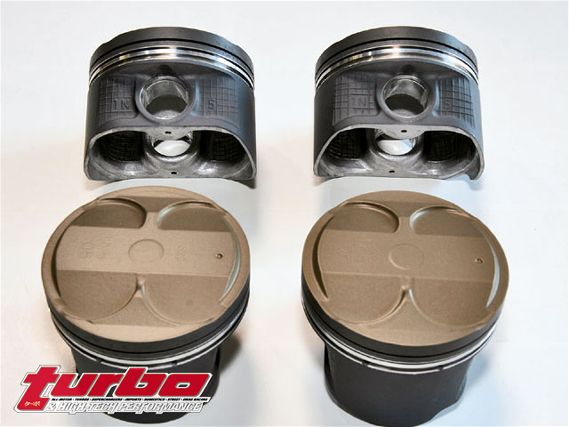 | Project Low-Buck SR20DE - Garage Tech
| Project Low-Buck SR20DE - Garage Tech
When installed in the 2.0L motor the pistons produce a compression ratio of 11.7:1. This is a little higher compression than what we wanted; however, we decided to modify the pistons for more valve clearance. Note: This isn't necessary for a really inexpensive build but the SR responds well to tight cam lobe centers when used with a proper header. Without enlarging the reliefs the intake cam can be advanced 5 degrees and the exhaust retarded 5 degrees safely with most cams but we wanted to be able to run tighter if necessary. Howard Watanabe of Technosquare used a piston-milling fixture on a mill to enlarge our valve pockets by 1mm and make them 1mm deeper. Since this is a cast piston we didn't want to go overboard and weaken the piston too much. This and some planned headwork will drop our compression to around 11.4:1 when we're done. Howard then balanced each piston to within one gram by removing material around the pin boss to equalize the weights.
Next, we shipped the pistons off to Swain Technology for coating with their PC-9 dry film lubricant coating on the skirts and their Gold Coat thermal barrier coating on the crowns. Swain Tech's Gold Coat thermal barrier coating is three layers instead of the typical one layer, consisting of a proprietary combination of different ceramics. Gold Coat reduces heat transmission to the underlying metal by 20 to 40 percent. This protects the piston from detonation-induced heat and reduces thermal expansion, allowing a tighter piston-to-wall clearance. Aluminum starts to lose strength at around 350 degrees and our cast piston can use the help. By reflecting this heat back into the combustion chamber, the coating helps promote a better burn, harnessing this bit of otherwise wasted heat. Swain Tech's Gold Coat transfers heat across through the surface coating but not past it to the underlying metal. This promotes even heating across the piston crown, thus helping reduce the potential of detonation-causing hot spots and promoting an even burn for good flame travel. Swain coatings bond to metal at a molecular level and will not ordinarily ever crack or flake off.
Swain applied their PC-9 coating to the skirts of our pistons. PC-9 uses molybdenum disulfide and tungsten disulfide in a heat-conducting polymer resin matrix to make a tough, lubricious surface. The ability to conduct heat helps the pistons stay cool in use. PC-9 coating will help improve piston skirt and cylinder wall wear and reduce thrust load-induced friction.
With the Swain coatings we can keep the stock bore, saving the expense of machining the block. Howard simply deglazed the bores with a finishing hone. With the PC-9 we'll be running an extremely tight piston-to-wall of 0.001 of an inch. This should help reduce oil consumption and improve ring seal as well as reduce noise even with our worn bore. By saving on machining, we gained the advantages of coating-a good trade-off.
The stock SR rods are very strong and safe for extended use at up to 8,000 rpm and for a low-buck motor, they're perfectly adequate. For our goal of a bulletproof inexpensive build, however, we chose some rods from Eagle. Eagle ESP rods are forged from 4340-steel alloy with a high nickel and chromium content. The nickel and chromium give the steel a high-tensile strength, high toughness and a much improved fatigue life over high-carbon and chrome-moly steels. A good feature of Eagle Rods is that they're forged in two pieces with the cap forged separately. This allows the rod to have the metal's grain flow in a circle around the big end bore. With this forging method there's less distortion of the rod's big end under load and superior strength of the part, especially fatigue strength.
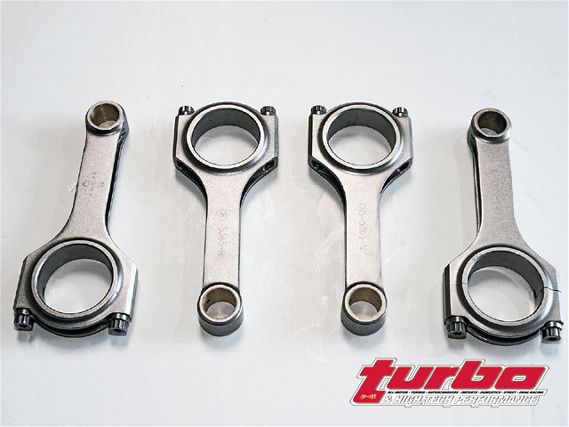 | Project Low-Buck SR20DE - Garage Tech
| Project Low-Buck SR20DE - Garage Tech
The rods have "H" profile beams. The "H" profile puts the rod's stiffness axis in line with the bending stresses it sees under use, making the rod strong for its weight at 100 grams per rod lighter than stock. If you look in the machined valley of the "H," you'll notice a rib at the base of the valley; this rib increases the fatigue strength of the rod's beam. The oiling holes for the piston pin are drilled upward at an angle toward the pin. Putting two smaller holes at the bottom makes a much stronger part.
The entire surface of the rod is machine finished. This ensures consistency in dimensions and weight. It also creates a smooth finish with no irregularities where a crack-inducing stress riser can form. After machining, the rod is subjected to shot-peening. This is where the rod is bombarded by hard steel shot at high velocities. Shot-peening helps refine the grain over the surface of the rod, creating a finely grained compressed layer of steel where cracks have a hard time propagating. Shotpeening causes the fatigue strength of most steel parts to rise by over 100 percent.
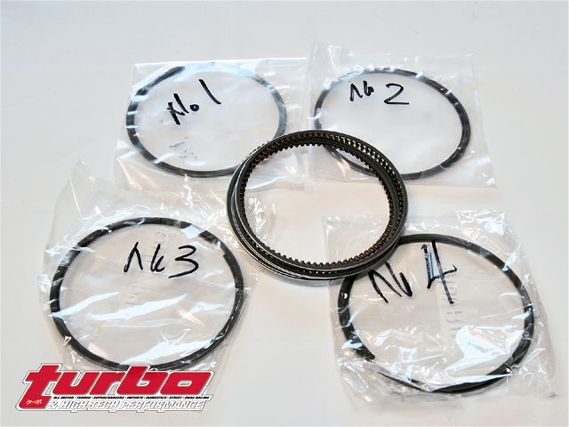 | Project Low-Buck SR20DE - Garage Tech
| Project Low-Buck SR20DE - Garage Tech
The piston pin bushing is a tough silicon bronze, which is one of the most wear resistant bushing materials available. Since the rod bolts are the most critical part on the connecting rod, no expense was spared here. Eagle uses genuine ARP 8740 7.16-inch rod bolts on all of their sport compact series rods. These rod bolts have a tensile strength of over 230,000 psi, many times stronger than the factory bolts.
In our next installment of the low-buck SR20 we'll get more into what we're doing with the engine's bottom end, and discuss what can be done and what is optional for a really low-dollar build.
